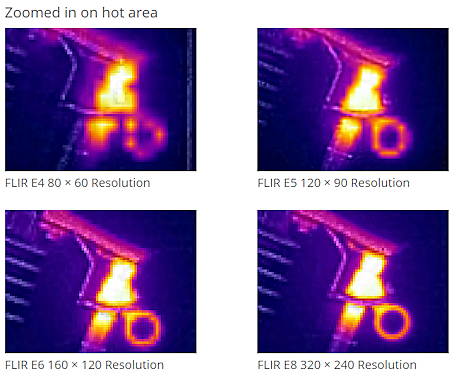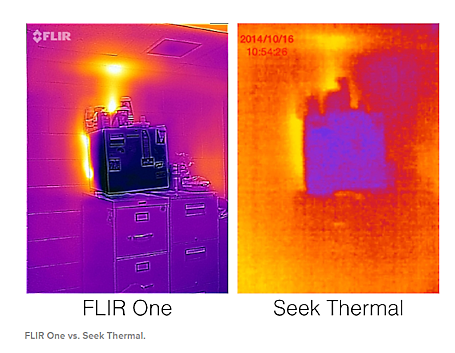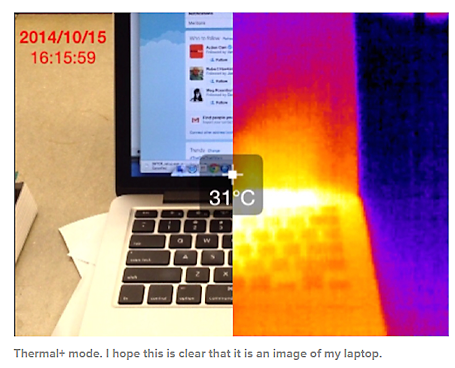By Guest Blogger Katherine Ogilvie
A badly insulated home is not only bad for the heating bills but also for the environment. More efficiently heated homes means less heating is necessary and thus there is less burning of fossil fuels to meet the demand for energy.
In the UK, heating homes is one of the main sources of carbon dioxide emissions; in 2004 it was found that roughly 30% of the entire UK’s emissions (that’s over 40 million tonnes of carbon) came from heating houses. Because of their significant environmental impact, carbon emissions from housing have been the target of government schemes with grants to aid individuals to make their homes more energy efficient (such as the Green Deal). However, many individuals are still unaware of how much heat their home is losing.
There are tools available to help, such as this calculator allows you to enter the dimensions of your home and estimates how much carbon dioxide and money you could save if you were to invest in insulation. For instance, for a medium size semi-detached house proper insulation could save over 10,000 kWh of heat loss, £510 per year and over 2,800 kg of Co2 – an overall saving of 76%.
What’s more there’s a general consensus on which parts of a home tend to lose the most heat; 25% of heat is lost through the roof, 35% through the walls, 15% through the floor, 15% through doors and 10% through windows.
While the generalisations of where heat is lost from most homes is good for giving you a rough idea of where heat could be saved, every home is different and is likely to be losing heat from varying locations. This is where a thermal imaging camera can be incredibly useful, it instantly provides a visual depiction of where heat is being lost in a specific home and therefore what home improvement could be of the most use.
There are various types of thermal imaging cameras which can be of use when identifying heat loss in the home:
FLIR Ex-Series
From $1200
The Ex-Series FLIR Cameras are easily the most popular in the thermal imaging camera market for those with a larger budget. Even so, several electrical test equipment outlets do offer them for hire but it is clear that you get what you pay for, especially when it comes to FLIR products. FLIR’s patented MSX technology displays thermal images of outstanding quality and in real time, making inspecting and observing a cinch.
The spotmeter function which comes on the E4, E5, E6 and E8 models allows the user to provide temperate information on every pixel. The key difference between each model is the thermal image quality which ranges from 80 by 60 pixels for the E4 all the way up to 320 by 240 pixels on the E8 (an image demonstrating the range of resolution can be seen below). The other differentiator would be the temperature differences from as small as 0.15 on the E4 to 0.06 on the E8. These easy to use point and shoot style cameras are ideal for detecting insulation loss.

(image from http://www.flir.com/instruments/display/?id=61194)
Thermal Imaging Smart Phone Extensions
Currently there are two main contenders in terms of thermal imaging cameras as phone additions, the FLIR ONE and the Seek.
The specs of each model are equivalent to low end of the aforementioned Ex-series range, with the FLIR ONE with a resolution of 80×60 (same as the E4) and the Seek with a resolution of 206×156 (somewhere between the E6 and E8).
However it is worth mentioning that the FLIR one combines its infrared image with images taken from the visual camera, which helps to provide a clearer picture – providing outlines of objects. As you can see from the picture below even though the thermal image on the FLIR one has a lower resolution, when combined with data from the visual image the output is easier to interpret.

The seek has a similar feature that provides context to the thermal image, known as the thermal + mode. Which produces a spilt screen, half the visual image and half the thermal image, as you can see below:

These models are ideal for checking the heat efficiency of a home because they offer a practical level of resolution but are a much more economical option with the FLIR ONE priced at $349 and the Seek at $199.
If you are considering purchasing one of these, it is worth noting that the FLIR ONE is only currently available for the iPhone 5 and 5s, although they are planning to release an android version. However an advantage of the FLIR ONE is it doubles up as an iPhone charger whereas the seek takes up the port needed to charge the phone. The Seek has an android version and can be used on anything from an iPhone 5 onwards.
The Seek also has various settings which could be of help when trying to identify heat loss in a home. For instance low mode, the camera will jump to and spot the coolest point in the field of vision – effectively finding the cold areas in your house so you don’t have to scan the photo/videos. There is a threshold mode which is applicable to this situation, you can set a temperature and get the camera to only show objects that are above, below or at that temperature. This could again be useful in locating cold spots, only highlight areas under room temperature for example.
The seek is the more affordable option, with better thermal resolution but a less professional final image. If you’re utilising the camera in a professional context (inspecting houses for their heat retention or as part of a property valuation) then it might be worth investing in the FLIR ONE for the extra cost, whereas if you’re just looking to evaluate your own home it could be worth getting the Seek. However, renting a professional thermal imagining camera on a single occasion is likely to be cheaper than both these options.
Thermal imaging cameras can provide valuable insight into home heat retention and are a key tool into ensuring homes are properly insulated which in turn can help to lessen our dependence on fossil fuels.
About the Author
This article was written by Katherine Ogilvie on behalf of ISSWWW, who are the UK’s largest electrical test equipment retailer and thermal imaging camera wholesaler.
Credits
[images taken from http://www.wired.com/2014/10/seek-thermal-infrared-camera-iphone-android/]
Leave a Reply
You must be logged in to post a comment.